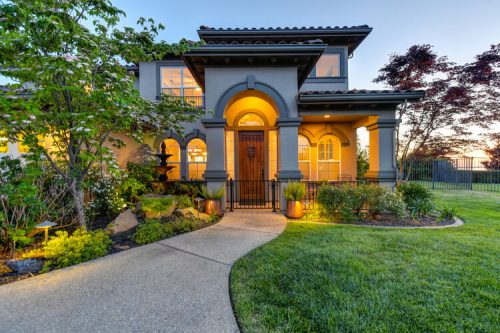Should I Refinance My Mortgage?

It seems like everybody and their mother is rushing to refinance their home mortgage with interest rates falling this year. It’s not a bad call for many homeowners while rates hover near record lows.
One positive result of COVID-19 (and there aren’t many) is the Federal Reserve’s decision to lower interest rates to the 0% – 0.25% range. Now, that doesn’t mean you can get a mortgage for 0%—though this has happened in some countries—it does mean that mortgage rates have fallen this year to follow suit.
Refinancing can lead to a lower interest rate, lower monthly payments, access to home equity, a loan term that better fits your needs or a combination of all of these. Read on for five main reasons to refinance your mortgage.
1. Lower your interest rate
This is the number one reason that most homeowners choose to refinance their mortgage. The higher your current interest rate, and the longer your mortgage term, the more you’ll benefit from refinancing. Generally speaking, if you can reduce your current interest rate by 1–2%, you should consider refinancing.
Keep in mind, the average cost to refinance these days is between 2% and 6% of the loan amount. The cost includes a loan origination fee, application fee, appraisal, inspection, title search, insurance fee and others. This cost is often wrapped up in the loan itself, so you don’t necessarily need to write a check for the entire cost to refinance.
You also want to make sure the remaining term on your mortgage is long enough to justify the cost of refinancing. If you have just a few years remaining on your mortgage (or you plan on selling your home soon), refinancing to lower your interest rate might not be worth the cost. If your credit score and/or income have risen since getting your original mortgage, you stand to benefit most.
2. Change your loan term
So, you get a huge promotion at work with a pay increase to follow, and you realize you’re able to pay off your mortgage much more quickly than you were before. You might be able to really lower your interest rate by reducing the term of your mortgage (from a 30-year to a 15-year loan, for example). This may result in a lower interest rate, but likely higher monthly payments.
On the flip side, say you need to lower your mortgage payment in order to keep up with your monthly expenses. You might benefit from stretching out your mortgage term. This may result in lower payments, but you’d be paying towards your mortgage for a longer period of time and likely with a lot more total interest paid throughout the life of your loan.
3. Access equity in your home
Redoing the kitchen? Building a man cave or she shed? Sending the kids to college? A cash-out refinance can allow you to take out money from the equity in your home while also getting a lower interest rate or different loan terms. Taking cash out, of course, will mean your new loan will be higher, so your monthly payment might go up depending on the new interest rate and loan term.
This is a feasible option for homeowners with significant equity in their home who do not have access to other assets or who do not want to get an outside loan.
4. Switch from an ARM to a fixed-rate mortgage
An adjustable-rate mortgage (ARM) is a mortgage that has a low fixed rate for the first few years, but then a rate that changes based on fluctuations in market interest rates. This can be bad news in a rising interest rate environment, because your mortgage rate could go up and up each year. Meanwhile, a fixed rate mortgage is your plain vanilla 30-year or 15-year traditional mortgage.
Switching from an ARM to a fixed-rate mortgage can be hugely beneficial when interest rates are low. Some homebuyers will opt into an ARM to get a ridiculously low interest rate for the first few years of owning their home, with the intent of selling it in a few years before the rate potentially goes up. This can be an issue for those homeowners if they eventually decide to stay in that home for an indefinite period of time. They’ll benefit most from switching to a fixed-rate mortgage.
5. Get rid of mortgage insurance
If you have a Federal Housing Authority (FHA) loan, you were probably psyched to make a very low down payment at closing. If your initial down payment was below 10%, you’ll need to pay private mortgage insurance (PMI) for the entire life of the loan. PMI typically costs between 0.5% and 1% of your entire loan amount on an annual basis, so it can really add up. So how do you get rid of it?
If you refinance and switch from an FHA loan to a conventional loan, you can eliminate the need to pay PMI, assuming you have at least 20% equity in your home. This could be a trifecta of mortgage goodness if you’re able to lower your interest rate, change your term to fit your needs and also get rid of PMI.
Obviously, refinancing your home mortgage is not cheap, and it’s not a decision that should be taken lightly. A whole bunch of factors are at play, and you’ll want to weight the pros and cons carefully.
See more at…https://www.coveplanning.com/blog/should-i-refinance-my-mortgage